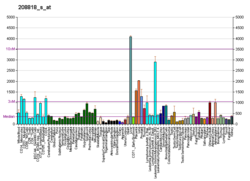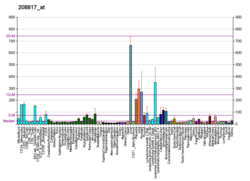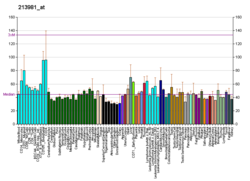
Dopamine is a neuromodulatory molecule that plays several important roles in cells. It is an organic chemical of the catecholamine and phenethylamine families. Dopamine constitutes about 80% of the catecholamine content in the brain. It is an amine synthesized by removing a carboxyl group from a molecule of its precursor chemical, L-DOPA, which is synthesized in the brain and kidneys. Dopamine is also synthesized in plants and most animals. In the brain, dopamine functions as a neurotransmitter—a chemical released by neurons to send signals to other nerve cells. Neurotransmitters are synthesized in specific regions of the brain, but affect many regions systemically. The brain includes several distinct dopamine pathways, one of which plays a major role in the motivational component of reward-motivated behavior. The anticipation of most types of rewards increases the level of dopamine in the brain, and many addictive drugs increase dopamine release or block its reuptake into neurons following release. Other brain dopamine pathways are involved in motor control and in controlling the release of various hormones. These pathways and cell groups form a dopamine system which is neuromodulatory.

A catecholamine is a monoamine neurotransmitter, an organic compound that has a catechol and a side-chain amine.
Schizotypal personality disorder, also known as schizotypal disorder, is a cluster A personality disorder. The Diagnostic and Statistical Manual of Mental Disorders (DSM) classification describes the disorder specifically as a personality disorder characterized by thought disorder, paranoia, a characteristic form of social anxiety, derealization, transient psychosis, and unconventional beliefs. People with this disorder feel pronounced discomfort in forming and maintaining social connections with other people, primarily due to the belief that other people harbor negative thoughts and views about them. Peculiar speech mannerisms and socially unexpected modes of dress are also characteristic. Schizotypal people may react oddly in conversations, not respond, or talk to themselves. They frequently interpret situations as being strange or having unusual meanings for them; paranormal and superstitious beliefs are common. Schizotypal people usually disagree with the suggestion that their thoughts and behaviors are a 'disorder' and seek medical attention for depression or anxiety instead. Schizotypal personality disorder occurs in approximately 3% of the general population and is more commonly diagnosed in males.
The dopamine hypothesis of schizophrenia or the dopamine hypothesis of psychosis is a model that attributes the positive symptoms of schizophrenia to a disturbed and hyperactive dopaminergic signal transduction. The model draws evidence from the observation that a large number of antipsychotics have dopamine-receptor antagonistic effects. The theory, however, does not posit dopamine overabundance as a complete explanation for schizophrenia. Rather, the overactivation of D2 receptors, specifically, is one effect of the global chemical synaptic dysregulation observed in this disorder.

Dopaminergic means "related to dopamine" (literally, "working on dopamine"), dopamine being a common neurotransmitter. Dopaminergic substances or actions increase dopamine-related activity in the brain. Dopaminergic brain pathways facilitate dopamine-related activity. For example, certain proteins such as the dopamine transporter (DAT), vesicular monoamine transporter 2 (VMAT2), and dopamine receptors can be classified as dopaminergic, and neurons that synthesize or contain dopamine and synapses with dopamine receptors in them may also be labeled as dopaminergic. Enzymes that regulate the biosynthesis or metabolism of dopamine such as aromatic L-amino acid decarboxylase or DOPA decarboxylase, monoamine oxidase (MAO), and catechol O-methyl transferase (COMT) may be referred to as dopaminergic as well. Also, any endogenous or exogenous chemical substance that acts to affect dopamine receptors or dopamine release through indirect actions (for example, on neurons that synapse onto neurons that release dopamine or express dopamine receptors) can also be said to have dopaminergic effects, two prominent examples being opioids, which enhance dopamine release indirectly in the reward pathways, and some substituted amphetamines, which enhance dopamine release directly by binding to and inhibiting VMAT2.

The norepinephrine transporter (NET), also known as noradrenaline transporter (NAT), is a protein that in humans is encoded by the solute carrier family 6 member 2 (SLC6A2) gene.

Entacapone, sold under the brand name Comtan among others, is a medication commonly used in combination with other medications for the treatment of Parkinson's disease. Entacapone together with levodopa and carbidopa allows levodopa to have a longer effect in the brain and reduces Parkinson's disease signs and symptoms for a greater length of time than levodopa and carbidopa therapy alone.

Tolcapone, sold under the brand name Tasmar, is a medication used to treat Parkinson's disease (PD). It is a selective, potent and reversible nitrocatechol-type inhibitor of the enzyme catechol-O-methyltransferase (COMT). It has demonstrated significant liver toxicity, which has led to suspension of marketing authorisations in a number of countries.

A catechol-O-methyltransferase(COMT) inhibitor is a drug that inhibits the enzyme catechol-O-methyltransferase. This enzyme methylates catecholamines such as dopamine, norepinephrine and epinephrine. It also methylates levodopa. COMT inhibitors are indicated for the treatment of Parkinson's disease in combination with levodopa and an aromatic L-amino acid decarboxylase inhibitor. The therapeutic benefit of using a COMT inhibitor is based on its ability to prevent the methylation of levodopa to 3-O-methyldopa, thus increasing the bioavailability of levodopa. COMT inhibitors significantly decrease off time in people with Parkinson's disease also taking carbidopa/levodopa.
In genetics, rs6311 is a gene variation—a single nucleotide polymorphism (SNP)—in the human HTR2A gene that codes for the 5-HT2A receptor. 5-HT2A is a neuroreceptor, and several scientific studies have investigated the effect of the genetic variation on personality, e.g., personality traits measured with the Temperament and Character Inventory or with a psychological task measuring impulsive behavior. The SNP has also been investigated in rheumatology studies.
Rs6265, also called Val66Met or G196A, is a gene variation, a single nucleotide polymorphism (SNP) in the BDNF gene that codes for brain-derived neurotrophic factor.

Carbidopa/levodopa/entacapone, sold under the brand name Stalevo among others, is a dopaminergic fixed-dose combination medication that contains carbidopa, levodopa, and entacapone for the treatment of Parkinson's disease.
In genetics, rs4680 (Val158Met) is a genetic variant. It is a single nucleotide polymorphism (SNP) in the COMT gene that codes catechol-O-Methyltransferase. The single nucleotide substitution between G--> A results in an amino acid change from valine to methionine at codon 158.
Sophia Frangou is a professor of psychiatry at the Icahn School of Medicine at Mount Sinai where she heads the Psychosis Research Program. She is a Fellow of the Royal College of Psychiatrists and vice-chair of the RCPsych Panamerican Division. She is a Fellow of the European Psychiatric Association (EPA) and of the American Psychiatric Association (APA). She served as vice-president for Research of the International Society for Bipolar Disorders from 2010 to 2014. She has also served on the Council of the British Association for Psychopharmacology. She is founding member of the EPA NeuroImaging section and founding chair of the Brain Imaging Network of the European College of Neuropsychopharmacology. She is one of the two Editors of European Psychiatry, the official Journal of the European Psychiatric Association.
The causes of schizophrenia that underlie the development of schizophrenia, a psychiatric disorder, are complex and not clearly understood. A number of hypotheses including the dopamine hypothesis, and the glutamate hypothesis have been put forward in an attempt to explain the link between altered brain function and the symptoms and development of schizophrenia.
The C957T gene polymorphism is a synonymous mutation located within the 957th base pair of the DRD2 gene. This base pair is located in exon 7. Most synonymous mutations are silent. However, the C957T mutation is an exception to this rule. While the 957C allele codes for the same polypeptide as the 957T allele, the conformation of 957T messenger RNA differs from the conformation of 957C messenger RNA. 957T messenger RNA is less stable and more prone to degradation. Dopamine D2 receptor expression is increased among individuals who carry the 957T allele compared to individuals who carry the 957C allele.

3-O-Methyldopa (3-OMD) is one of the most important metabolites of L-DOPA, a drug used in the treatment of the Parkinson's disease.
The genetic influences of post-traumatic stress disorder (PTSD) are not understood well due to the limitations of any genetic study of mental illness; in that, it cannot be ethically induced in selected groups. Because of this, all studies must use naturally occurring groups with genetic similarities and differences, thus the amount of data is limited. Still, genetics play some role in the development of PTSD.

A catechol estrogen is a steroidal estrogen that contains catechol (1,2-dihydroxybenzene) within its structure. The catechol estrogens are endogenous metabolites of estradiol and estrone and include the following compounds:

Opicapone, sold under the brand name Ongentys, is a medication which is administered together with levodopa in people with Parkinson's disease. Opicapone is a catechol-O-methyltransferase (COMT) inhibitor.




















